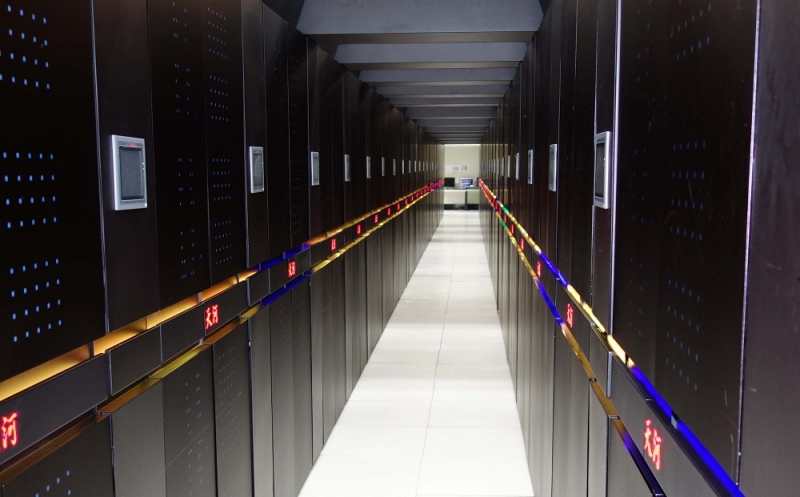
The latest Top 500 supercomputer rankings were released yesterday, and China’s Tianhe-2 has retained the title of the fastest computer system in the world for the sixth consecutive time.
The country has almost tripled the number of supercomputers it has on the list to 109, up from 37 just six months ago. And while the US still has the most supercomputers on the list from a single country, 201, it’s the lowest number since the Top 500 was created in 1993.
Tianhe-2, which was created by China's National University of Defense Technology, has 3,120,000 cores and is capable of 33.86 quadrillion floating point operations, or flops, in a single second. This makes it almost twice as fast as the second most powerful supercomputer on the list – the US energy department’s Titan Cray XK7, which was recorded at 17.59 petaflops on the Linpack benchmark.
An American system also takes up the number three position – IBM’s Sequoia, which was constructed for the National Nuclear Security Administration and is running at Lawrence Livermore National Lab. In 2012, Sequoia took the title of the world’s fastest supercomputer but has since been outpaced by Tianhe-2 and Titan Cray XK7.
The only two new entries in the top ten are Trinity at number 6, a system from the US department of energy, and Hazel Hen at number 8, a machine from Germany.
Rajnish Arora, vice president of enterprise computing at market research firm IDC Asia Pacific, told the BBC that China’s rise doesn’t so much indicate that the US is under-investing in supercomputers, rather it is more to do with the evolution of China’s economy and business.
"When China started off appearing on the centre stage of the global economy in the 80s and 90s, it was predominately a manufacturing hub," he said. "All the IP or design work would happen in Europe or the US and the companies would just send manufacturing or production jobs to China. Now as these companies become bigger, they want to invest in technical research capabilities, so that they can create a lot more innovation and do basic design and engineering work."
It’s worth pointing out that although many of the supercomputers on the list are based in regions around the world, most contain American-made technology from companies such as Intel, AMD and Nvidia. Even Tianhe-2 is packed with Intel’s chips, and the California-based company supplied components for 445 of the machines in the Top 500.
Tianhe-2 may not hold onto the ‘fastest supercomputer’ title for many more years; the US Department of Energy’s Summit system is scheduled to come online sometime in 2017 and will supposedly be about nine times faster than China’s machine, running at about 309 petaflops. And it was reported back in July that President Obama had authorized the creation of the first ever exascale computer. There was no timescale provided as to when it may be completed, but the machine will theoretically be able to perform one quintillion (a billion billion) calculations per second, or 1000 petaflops, which is believed to be the order of processing power of the human brain at neural level.